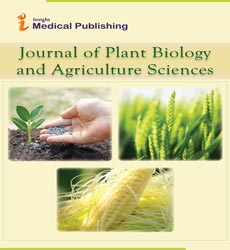Plant Physiology: Mechanism and Functions
Plant physiology may be a sub discipline of botany concerned with the functioning, or physiology, of plants. Closely related fields include plant morphology (structure of plants), plant ecology (interactions with the environment), phyto chemistry (biochemistry of plants), cell biology, genetics, biophysics and biology. Fundamental processes like photosynthesis, respiration, plant nutrition, phyto-hormone functions, tropisms, nastic movements, photo periodism, photo morphogenesis, circadian rhythms, environmental stress physiology, seed germination, dormancy and stomata function and transpiration, both parts of plant water relations, are studied by plant physiologists. plant physiology includes the study of biological and chemical processes of individual plant cells. Plant cells have variety of features that distinguish them from cells of animals, and which cause major differences within the way that flowers behaves and responds differently from animal life. For instance, plant cells have a cell membrane which restricts the form of plant cells and thereby limits the pliability and mobility of plants. Plant cells also contain chlorophyll, a compound that interacts with light during a way that permits plants to manufacture their own nutrients instead of consuming other living things as animals do. plant physiology deals with interactions between cells, tissues, and organs within a plant. Different cells and tissues are physically and chemically specialized to perform different functions. Roots and rhizoids function to anchor the plant and acquire minerals within the soil. Leaves catch light so as to manufacture nutrients. For both of those organs to stay living, minerals that the roots acquire must be transported to the leaves, and therefore the nutrients manufactured within the leaves must be transported to the roots. Plants have developed variety of the way to realize this transport, like plant tissue, and therefore the functioning of the varied modes of transport is studied by plant physiologists.
Open Access Journals
- Aquaculture & Veterinary Science
- Chemistry & Chemical Sciences
- Clinical Sciences
- Engineering
- General Science
- Genetics & Molecular Biology
- Health Care & Nursing
- Immunology & Microbiology
- Materials Science
- Mathematics & Physics
- Medical Sciences
- Neurology & Psychiatry
- Oncology & Cancer Science
- Pharmaceutical Sciences
